Analysis – Christopher Hector
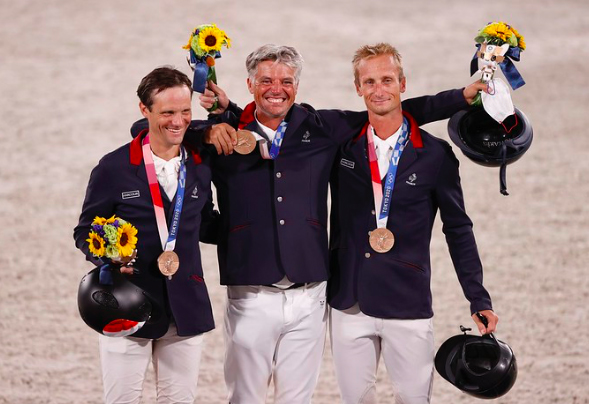
Not only did the French eventing team finish with a bronze medal, but the results at the Games were a triumph for the French breeders. Out of the 25 horses to go through to the individual final, eight were French bred:
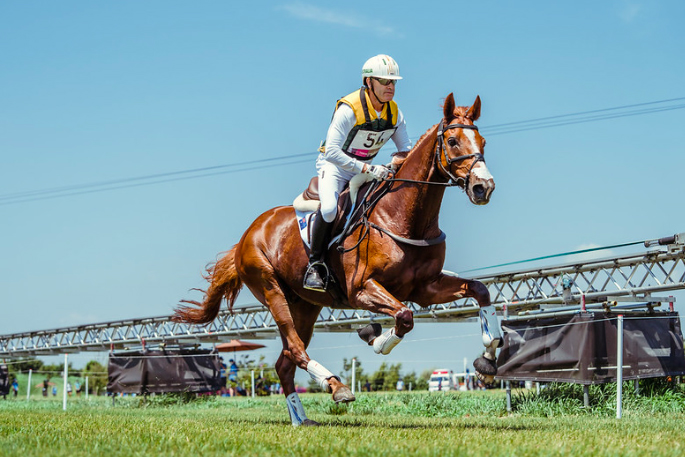
Vassily de Lassos – silver
Toubleu de Rueire (Mr Blue / Bayard d’Elle), Triton Fontaine (Gentleman IV / Nightko), Absolut Gold (Grafenstolz / Verglas xx), Vinci de la Vigne (Esterel des Bois / Duc de Hutrel), Totem de Brecey (Mylord Carthago / Quoglof Rouge) then the three medal winners – Vassily des Lassos (Jaguar Mail / Jalienny aa), Toledo de Kerser (Diamant de Sémilly / Papillon Rouge) and Amande de B’Neville (Oscar des Fontaines / Elan de la Cour).
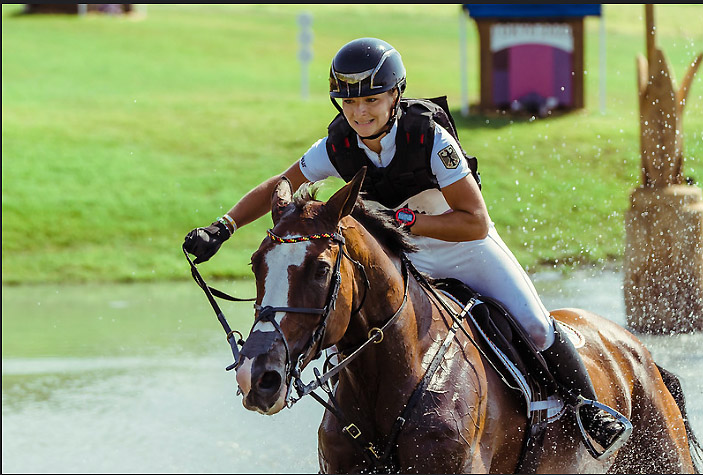
Amande de B’Neville – Gold!
There was more French blood, Imperial van de Holtakkers is by Quidam de Revel out of an Argentinus mare, Colorado Blue is by Jaguar Mail, Don Guidam is by the Quidam de Revel grandson, Quidam and the Irish branded Grovine de la Reve is by Hermes de Rêve, a son of showjumping world champion, Quito de Baussy.
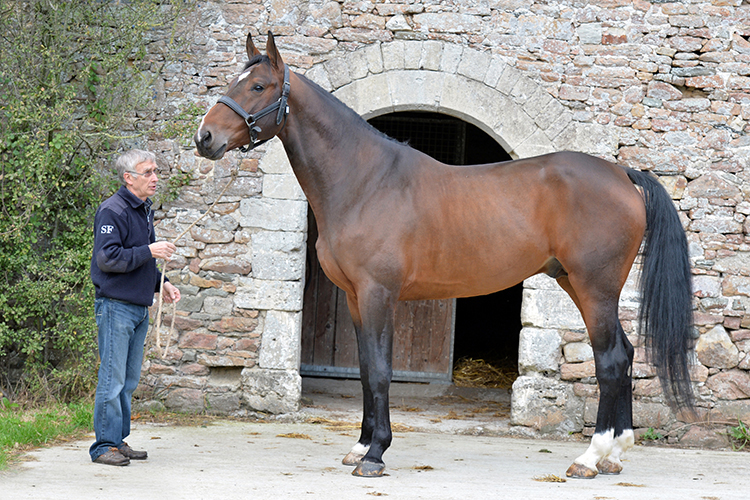
Jean-Baptiste and his young son of Kannan, Cristal de B’Néville
The Tokyo Games were also a triumph for the French breeder, Jean-Baptiste Thiebot and his stud, the Haras de B’Néville. At Rio, Jean-Baptiste bred the French team gold medallist and individual silver, Piaf de B’Neville – at Tokyo he bred the gold medallist, Amande de B’Neville.
Amande is an interesting example of how the borders have come down in Sporthorse breeding. She is by the Selle Français stallion, Oscar des Fontaines who is by the Danish stallion (and 1.60 superstar) Lando, who is 3/4 Holsteiner, 1/8th Hanoverian, and 1/8th Swedish and out of a mare by the Dutch sire, Mr Blue out of a Selle Français mare by Galoubet. Amande is out of Perle de B’Neville (by the Grand Veneur son, Vas Y Donc Longane). Amande is the fourth generation of mares in her line to carry the B’Neville suffix.
Back in 2015, I was privileged to travel through France visiting some of the famous breeders of eventers, but I was told I was facing a challenge at B’Neville. Jean-Baptiste does not talk, I was told. It must have been my lucky day, because he talked and talked, so much so that I had to hold up my hand to stop him, to let our minder, Elise Bourdin from UNIC, catch up with the translation.
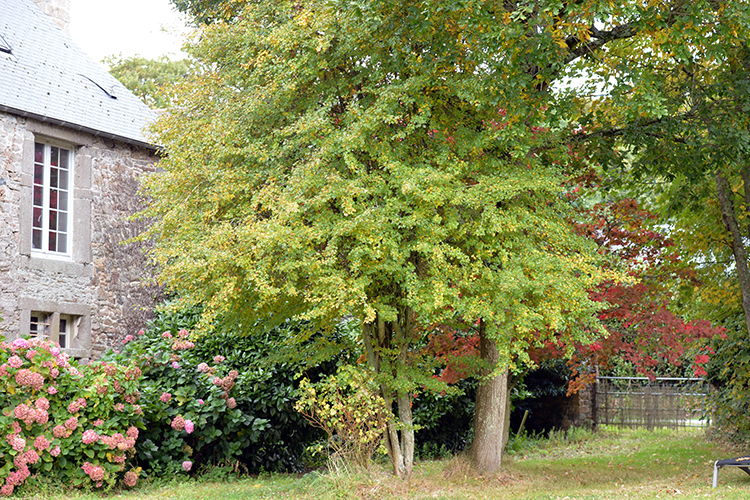
Jean-Baptiste’s farm is beautiful, wonderful old stables, a gracious mansion and a lovely garden, but you can see that inside the house is far less important than the exterior. Papers cover almost every available surface, and a microwave seems to have taken over the traditional French kitchen. His friend, Catherine Delpierre, who is helping take care of the visitors, remarks that ‘all Jean-Baptiste cares about is his foals, the rest of his life is not very important.’
It seems Jean-Baptiste was headed for the more conventional life of a lawyer, before horses took over: “I was studying law, and I came here for a holiday with my uncles, they had cows and six mares. Before the Selle Français studbook, it was the Anglo Norman studbook. Here in Normandy there were always a few places with Thoroughbred mares, and these mares were mixed with the Anglo-Norman. This breeding base came from Ireland and the United Kingdom.”

Mares and foals, left to right: Lady de B’Néville (Cellebrio/Eve de B’Néville/Qredo de Paulstra); Graine de B’Néville (Urquino du Hamel by Quinoto Bois Margot/Lady de B’Néville); Sonate de B’Néville (Qredo de Paulstra/Ecume by Rosire); Genial de B’Néville (Kapitol d’Argonne by Apache d’Adriers/Nuance de B’Néville); Galaxie de B’Néville (Othello du Phare by Kannan/Sonate de B’Néville); Nuance de B’Néville (Talent Platiere/Vigie de B’Néville by Dear Patrick); Gloire de B’Néville, (Giovani de la Pomme by Shindler de Muze/Onde de B’Néville); Onde de B’Néville (Talent Platiere and Eve de B’Eeville by Qredo de Paulstra); Gandhi de B’Néville (Othello du Phare by Kannan/Oceane de B’Néville); Oceane de B’Néville (Quiniou/Griffe de B’Néville by Rosire)
“After my law studies, I started to think about the future, and I decided to become a farmer and a horse breeder, so I came back to this farm in Normandy. I started breeding some horses, and it grew, I had eight mares, so it started.”
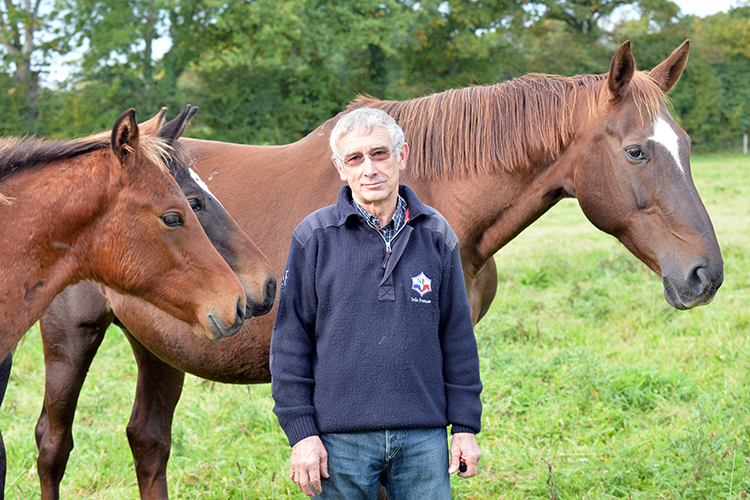
Jean-Baptiste shows off one of his broodmares – Oceane de B’Néville
You breed for showjumping rather than eventing because there is more money in showjumping…
“About thirty years ago, there were as many eventing competitions as there were showjumping, now it is very different. Then the great equestrian families of Normandy – Navet, Leredde and Pignolet – were eventing. Then the direction went to showjumping because you can make a lot of money in showjumping.”
Will this change after the success of the French eventers at Rio?
“All the money goes to the bigger showjumping competitions, but I do have two young horses in my stables that I think would be very good for eventing, so I hope that after Rio the market will go up for eventers. Eventing is a wonderful competition – dressage, cross country, showjumping – I would like to continue to sell horses for eventing, but the reality is sometimes difficult, and I will sell horses for showjumping because I need to live.”
What have been the most important stallions that you have used?
“Recently it has been Kannan. He produces foals at every level, for amateur riders and top level riders. I have twenty five mares and I use about twenty different stallions.”
Do you use some of the younger stallions, or only the established stallions?
“I use some younger ones. A lot of breeders in France are using Kannan and Diamant de Sémilly, but I am also using sons of those two. The foals of Diamant are either top level, or nothing, so breeding with him is a risk. When I choose stallions, I prefer to choose stallions that are ridden by girls, or by rich amateurs. The amateur riders have the best horses because they are not such good riders – when the horse is ridden by Ludger Beerbaum or Kevin Staut, you can’t be sure how good it is.”
“I have used the stallion, Kapitol d’Argonne (Apache d’Adriers / Galoubet) who was ridden by the Italian, Emilio Bicocchi, this was a very good horse because he wasn’t ridden by the best rider in the world.”
Is it hard to introduce ‘blood’ into your breeding program because people don’t want to buy the foals of Thoroughbreds?
“It’s complicated, it is hard to get good blood, there’s no point in blood if it is bad blood, the foals need to be good in the head. My mares have blood. For example, with Piaf, one journalist said it was amazing that he looked like a horse with a lot of blood, when his pedigree didn’t look like that, but there is blood in the fourth generation.”
(Actually Piaf de B’Neville is over half – 57.42% – blood. He is by Cap de B’Neville a grandson of the great Rantzau xx, out of a mare by the Jalisco son, Reve d’Elle. Once you go behind that fourth generation you find all the great Thoroughbreds that influenced the French horse: Rantzau – who is the only one who appears in the fourth line, Ultimate (x 3), Furioso, Le Sancy, Fra Diavolo, Phalaris, l’Alcazar and seven crosses of Orange Peel.)
“I have a mare by Quick Star, which has a lot of blood and I bred this mare to Lam de Fétan (Ferger Mail / Le Tot de Sémilly) who is quite heavy with not a lot of blood, but the foal is a blood type.”
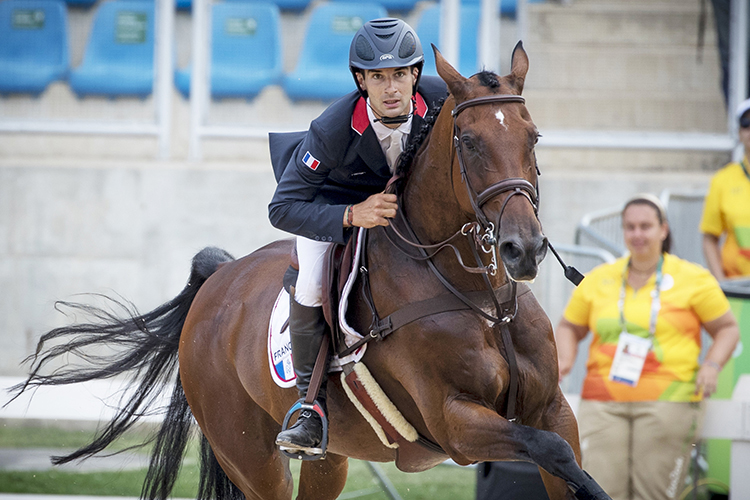
Piaf de B’Neville
Right from the start was Piaf something special?
“Certainly not. At the beginning he was nothing special. He was not very tall because he was the first foal of that mare. Finally when he was three years old, you could see he had very good movement. When he was three I presented him to some buyers, but they didn’t like him because he was too young and too green. But then the coach of Astier Nicolas saw Piaf and another horse, but they bought the other one and they were training him for the Young Horse Championships at Pompadour for eventing.”
“But six weeks before the Championships the horse was injured and the coach, rang me and said, Mr Thiebot, it is a catastrophe, she remembered Piaf and asked if I could sell the horse so the rider had something to take to the Championships. The rider started to work with Piaf and Madame Perrier liked him a lot, but a few months later the rider stopped riding, and her father rang me to say he didn’t want the horse any more, and Piaf came back here.”
“Then Astier’s mother rang to say that Astier had seen the horse and liked him, but then he was owned by his friend and he didn’t want to interfere. So she came with Astier and after a trial, Astier bought him with the help of a friend. It is another example of the extraordinary stories of horses, if Piaf had stayed with the first rider, no one would have ever heard of him.”
What is the passion? What makes you a horse breeder?
“Sometimes it is better to live with horses than with humans. My passion is breeding horses and I want to share this passion with other breeders. I don’t know if it is the same in the other parts of the world, but in France the Selle Français studbook has registered 50% less foals than they did in the past, but I hope the level will stay there and not get any lower.”
“I take a lot of care of how the horses grow up, their feeding and the fields is very important for the well-being of the horses. Everything is based on a four-year preparation for the horses to be ready to event and showjump. I produce about 80% of the food for my horses, using different grains, and every day, they get supplements and minerals. When people come here to buy a horse, and they take x-rays, they find nothing bad because of the way they are raised.”
“The problem is that we can keep the stallion semen, but when the mares die, then they are lost. In Italy they are trying to produce foals in laboratories, with no parents anywhere, and with just one mare, they can get over 20 eggs. For eventing our horses have to have so many different characteristics, I guess that the foals born in labs won’t have these qualities and won’t be able to compete in eventing.”
But that trip through France also drew attention to the importance, and potential, of the French Anglo-Arab and sure enough there were three Anglo-Arabs in the eventing at Tokyo. For Australia, the bronze medallist, Vassily de Lassos AC 27.99% with his owner Andrew Hoy. He was joined by Bolivar Gio Granno AA ridden by Stefano Bracciaroli under the Italian flag, and for Spain, Francisco Gaviño riding the mare Source de la Faye AA.
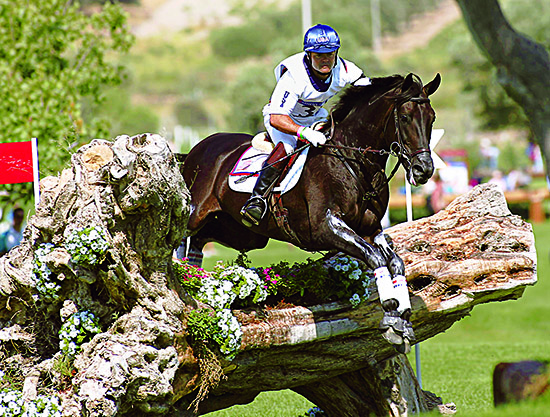
Windfall at Athens…
It would also be remiss not to salute the Trakehner stallion, Windfall, himself an Olympic eventer (12th at Athens, team bronze) and the sire of two of the eventers in the American Tokyo eventing team, Doug Payne’s Vandiver (Mystic Replica xx) and Boyd Martin’s Tsetserleg TSF (Buddenbrock). I cannot think of another stallion of any breed that has competed in the eventing at a Games and then gone on to sire Olympians.
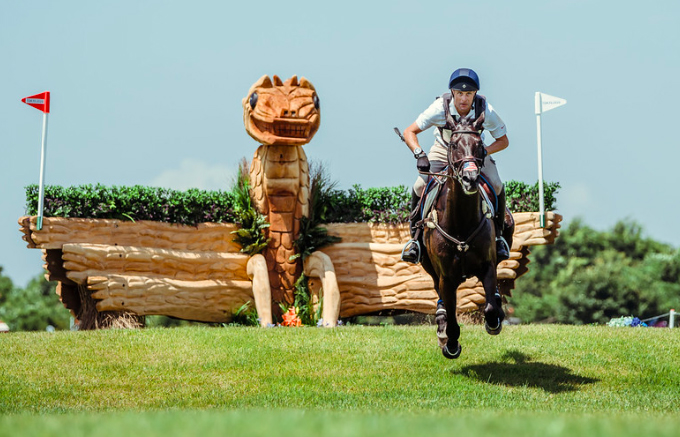
Tsetserleg TSF
Windfall was initially trained by Ingrid Klimke with great success, they scored forty wins and placings, including National Young Horse championships, a professional rider championship and wins at all the CIC**s and CIC***s held in Germany in 1999. That year, as a seven-year-old he was elected Germany’s Horse of the Year (all breeds, all sports) by the readers of Reiter Revue. He was short-listed for the German team for the Sydney Olympics in 2000, he did not travel because Ingrid was selected to compete on the Thoroughbred gelding Sleep Late.
In late 2000, Windfall was sold to the United States, with the understanding that Darren Chiacchia would campaign him and that he would be kept intact for breeding purposes. He was a star with Darren and consistently ran double clean on cross country including at the 2004 Olympic Games at Athens. He was retired after twelve seasons.
Windfall was bred by a small-scale but passionate breeder in Germany, Heinz Lembke, who owned Windfall’s famous dam, Wundermaedel xx. She was the daughter and granddaughter of two of the top steeplechaser producers in Europe and was herself quite successful both in racing and eventing. Approved by the Trakehner Verband, she was awarded the status of Elite Mare in the Verband studbook. Out of 110 Thoroughbred mares approved to produce “purebreds,” she was one of only three who are ranked Elite. She passed away at age 28 in 2009.
Wundermaedel
Wundermaedel xx was born in Bavaria in 1979. Her sire, Madruzzo, won the St. Leger in 1971 and was second in the German Derby. In the mid-80’s he was ranked top steeplechase sire, as was his father, Celadon xx, in the mid-70’s.
Wundermaedel raced nine times as a three-year-old with one win and five placings. As a five-year-old, she was inspected by the Trakehner Verband and received the dream score of 10 for type. She went on to event with wins and placings up to advanced. She has produced one event horse after another. Her daughter Windspiel (by Hyalit) was Trakehner of the Year 1997 and was the best German-bred horse at the Luhmühlen CCI*** that same year, finishing seventh. Every colt Wundermaedel produced was selected for the Neumünster stallion inspections, five colts in all.
Windfall is a famous Trakehner, well yes, but by blood he is only one quarter Trakehner. His sire, Habicht was by the Anglo Arab, Burnus out of the Trakehner mare, Hallo (Goldregan / Handschelle) and this is the only Trakehner line on Windfall’s pedigree, since his mother is straight Thoroughbred. Habicht was himself a successful eventer. Two injuries to his rider, Martin Plewa, both unrelated to Habicht, were the only factors that kept him from the 1976 Montreal Olympics and the 1978 World Games in Lexington. They won the CCI*** at Achselschwang and in 1977 were the best German pair at the Burghley CCI****.
Which, I guess, rounds out this little piece, reinforcing the message, for eventing you should look for Selle Français, Anglo Arab, Trakehner and blood, blood, blood…


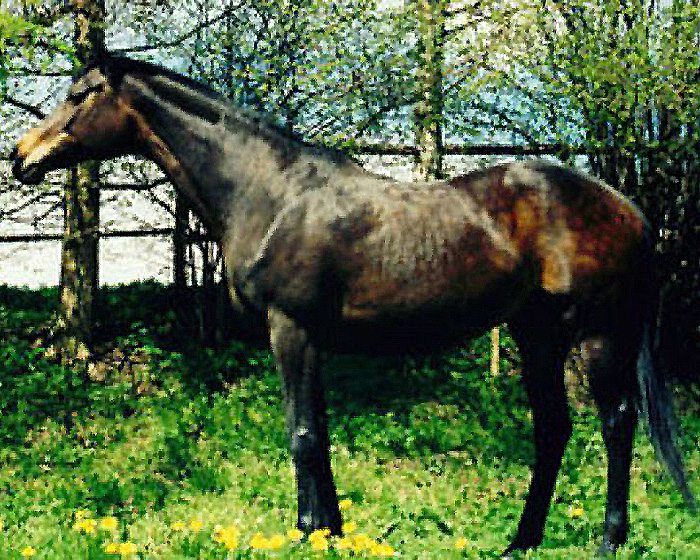
Your readers might be interested to know more about Windfall II, since most of his live and career was in the United States. He is owned by Timothy Holekamp, who is responsible for his Olympic success, and who is the breeder of Tsetserleg TSF as well. According to Tim’s WFBSH research, “Windfall is the only horse in the history of our sport to win a CCI**** (old speak [now 5*]) and then go on to become a proven Grand Prix dressage horse.” He is still sound and competing at 29. Windfall certainly did brilliantly in Germany as a young horse, but his status as an Olympian and the sire of Olympians is due to Tim Holekamp, USA.
Here is an article I wrote about Chris’s article – https://breeding-news.warmbloodstallionsna.com/2021/08/eventing-breeding-at-tokyo-new-article.html – and a link to the Windfall page of Tim Holekamp’s website: https://newspringfarm.com/windfall/index.html